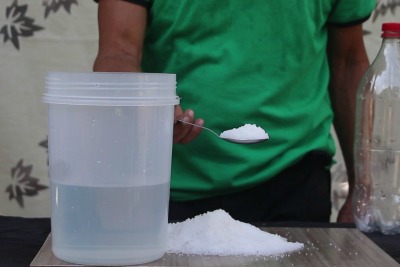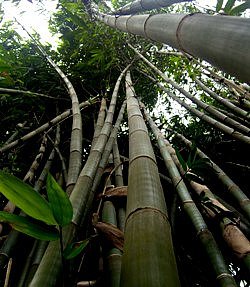There’s an easy and quick way to prepare liquid fertilizer. All it takes is to dissolve urea (46-0-0) in water.
This dilute solution can be immediately used for soil drench and spray application to supplement nitrogen to plants in need of the nutrient or to ensure its availability.

1% urea solution can be prepared just before application
The basic procedure that we follow is based on the long-established fact that 1% urea solution can be sprayed or used to water many plants including the leafy vegetable pechay (Brassica sp.).
As for maintenance fertilizer for potted seedlings in the nursery, we do the watering once a week to once every two weeks.
But first, the theoretical basis.

